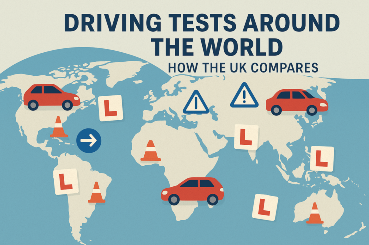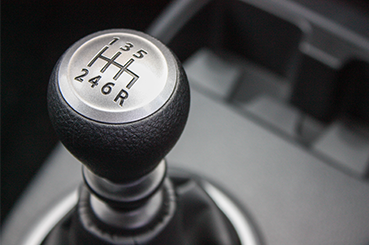
Driving is a rite of passage for many young adults, offering newfound freedom and independence. Yet, for those stepping into the driver’s seat for the first time, the road to getting insured for young drivers can seem like a maze.
Young driver car insurance often comes with its own set of challenges, but fear not! This comprehensive guide will navigate you through the intricacies of securing the right insurance for provisional drivers and those under 25.
Understanding Young Driver Insurance
Typically, insurance companies consider young drivers to be individuals under the age of 25. In the UK, although young people make up only 1.5% of drivers, they’re involved in more than 10% of road accidents.
Their claim rate surpasses that of any other age group, leading insurers to consider them a ‘high-risk’ category. As a result, the average car insurance quote for drivers aged 17 to 22 is estimated to exceed £1400.
According to data from the Association of British Insurers (ABI), the average claim for 18 to 20-year-olds stands at £3,667, the highest among all age groups in Britain.
Types of Insurance for Young Drivers

Provisional Driver Insurance
If you’re learning to drive with a provisional license, you’ll need insurance to practise on public roads.
Provisional driver insurance covers you while you’re learning, either with a driving instructor or a supervisor.

New Driver Insurance
Once you pass your test and obtain a full licence, you’ll need to transition to car insurance for new drivers.
This insurance considers your recent transition from a provisional to a full license.
How Much Is Insurance for a New Driver?
The cost varies significantly based on multiple factors. On average, a new driver can expect to pay several thousand pounds annually for insurance.
However, factors such as the car model, location, driving history, and chosen coverage will affect the final premium.
Factors Affecting Young Driver Insurance
Several factors influence the cost of insurance for young drivers:
Type of Insurance Policy:
The insurance you select for your vehicle dictates the extent of coverage you’ll receive for accidents, injuries, and vehicle damages arising from situations you’re involved in.
How you’re identified as a driver on the policy also impacts the premium paid by you or any other named driver listed on the policy.
Type of Car:
Regardless of age, the car you choose significantly impacts your insurance premium. As a young driver, insuring a high-powered vehicle often means facing steep rates.
Furthermore, vehicles lacking built-in security features or those that have undergone modifications tend to incur higher insurance costs.
Personal Information:
The information you provide in your insurance application, including personal details, driving history, and vehicle specifics, informs your insurer’s understanding of your profile.
Factors like your home address and the location and storage conditions of your vehicle, both during the day and night, can influence your insurance premium. The younger you are, the higher the insurance premium.
Additionally, your driving record and the vehicle’s designated use play a role in determining your insurance cost – such as commuting to work.

Tips to Find Affordable Young Drivers Insurance
Compare Quotes
Shopping around for quotes is crucial. Use comparison websites or seek advice from insurance brokers who specialise in young driver insurance.
Compare coverages, not just prices, to ensure you’re adequately protected.
Telematics or Black Box Insurance
Consider telematics insurance, also known as black box insurance, which involves fitting a device in your car to monitor your driving habits.
Safe driving can lead to discounts on premiums.
Choose the Right Car
Opt for a car in a lower insurance group. While a flashy ride might be tempting, your choice significantly impacts insurance costs.
Typically, smaller, fuel-efficient models in lower insurance groups have cheaper insurance compared to higher group vehicles with powerful engines.
Reduce your Yearly Mileage
Lower annual mileage reduces accident risks, factored into insurance premiums.
Be honest about your average miles when asked by your provider. Inaccurate estimates could lead to claim denial if discovered later.
Pay Annually
Paying the annual premium in one go can save you money.
Monthly payments often include interest, making it costlier overall.
Increase your Excess
Choosing a higher voluntary excess could lower your premium.
Ensure you can afford both voluntary and compulsory excesses during a claim.
Avoid Unnecessary Cover
Adding optional extras like a courtesy car, windscreen cover, or breakdown cover increases costs.
Evaluate essential cover to avoid overpaying.
Carefully Consider Modifications
Customising your car may raise insurance due to increased theft risk.
Evaluate costs before making modifications.
Park securely
Parking in well-lit areas close to home or in secure compounds can affect premiums.
While a garage seems secure, it might not necessarily reduce premiums.
Improve security features
Installing approved alarms or immobilisers might lower insurance costs.
Confirm potential savings before making purchases.
Enrol in advanced driving courses
Courses like Pass Plus for new drivers might offer insurance discounts.
Verify with your provider for potential premium reductions.
Add experienced drivers to your policy
Adding an experienced driver if you’re new could reduce premiums.
Ensure the primary user is named to avoid insurance fraud.
Consider multi-car policies
Insuring multiple cars under one policy may result in discounts, potentially cheaper than individual policies.
Accumulate a no-claims discount
Not claiming leads to renewal discounts.
Sometimes, it’s cheaper to cover minor repairs than to claim.
Avoid penalty points
Safe driving prevents higher insurance costs.
Adhering to traffic rules prevents penalty points on your licence.
Purchase add-ons separately
Certain additional covers may be cheaper as standalone policies than bundled with car insurance.
Be cautious of auto-renewal
Although providers can’t charge existing customers higher premiums, compare quotes before auto-renewing. There might be cheaper deals available.

What Age Does Car Insurance Go Down for Young Drivers?
Car insurance premiums are influenced by various factors. As you age, your insurance costs may decrease, but this reduction depends on factors like the vehicle you drive and its safety and security, which could pose additional risks to insurers. Drivers with a no-claims discount of 5+ years typically receive substantial annual premium discounts. Between the ages of 25 and 65, prices generally decrease for drivers with clean driving records.
Comprehensive insurance premiums tend to reduce from the age of 25 onwards. Statistics indicate that drivers aged 25 and above are less prone to accidents, with premiums declining steadily until around 75. After this age, the risk tends to increase. Starting to build your no-claims discount at a young age can accelerate the reduction in premiums. Those with a history of driving offences or multiple claims will likely continue paying higher premiums until they rebuild their no-claims discount and attain a cleaner driving record.
Remaining loyal to an insurance provider might not always be financially beneficial. Insurance companies frequently seek new customers, so it’s wise to shop around when your insurance is up for renewal. As you age, exploring other insurers could lead to discovering cheaper rates and better deals.
Final Thoughts
Navigating insurance as a young or new driver might initially seem daunting, but with the right information and strategies, it’s manageable. Remember to research extensively, compare quotes diligently, consider telematics options, and choose your vehicle wisely to mitigate high insurance costs.
Insurance for young and new drivers need not be a financial burden. By understanding the factors affecting premiums, exploring different types of insurance, choosing the right vehicle, and leveraging available discounts, you can find affordable coverage without compromising on protection.
Embrace the road ahead responsibly, armed with the knowledge to navigate the world of insurance as a young driver. The journey begins with finding the right coverage that safeguards both you and your newfound freedom on the road.



















